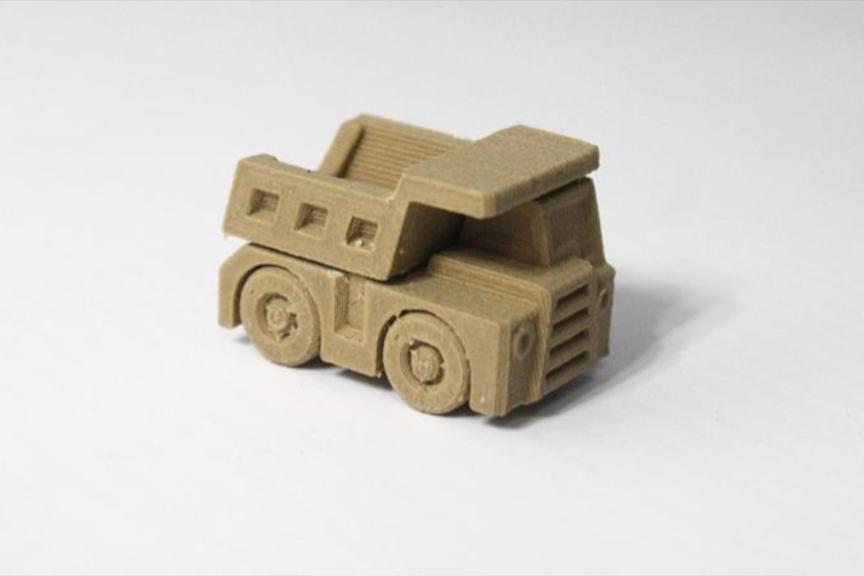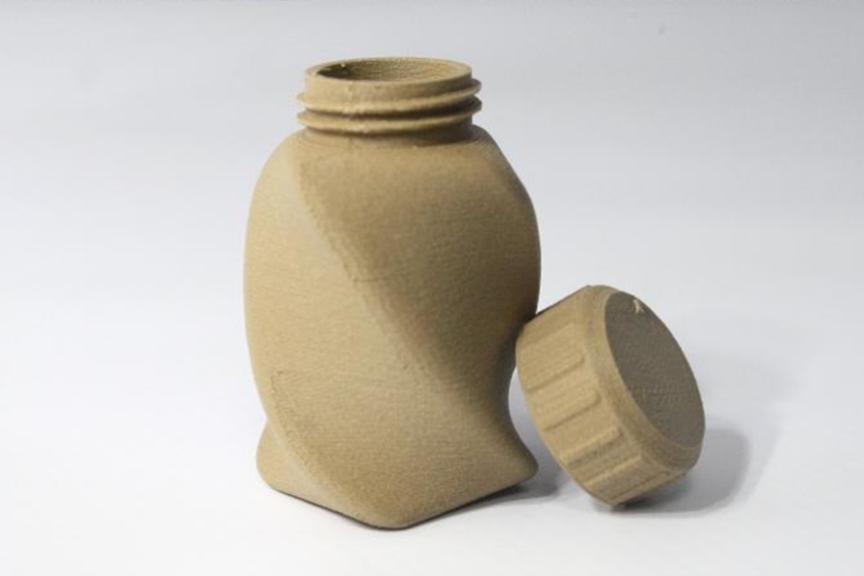Surely most people would like to print their own house. And it would be better if it were made of wood. However, modern technology does not yet allow such large-scale projects to be made by 3D printing. However, it is possible to make a model out of wood by using a filament like WOOD.
Wood for 3d-printer – what is it?
The literal translation of the word wood means wood. Does this mean that you can put an ordinary wooden rod in the printer, and it will start printing chips? Of course not. In this context, WOOD refers to a type of filament that is similar in texture or color to wood. It is also called wood plastic.
Interesting! Some manufacturers call this type of filament LayWood.
All wooden plastic can be divided into two conventional groups:
- Imitating the color of wood. In such a material, a dye pigment is added, which sets the tone of the plastic. Such filaments include: FiberWood or ESUN Wood.
- Containing in its composition natural wood dust. This filament not only repeats the color of wood, but also its texture. The final products are pleasant to the touch. They exude a subtle scent of wood.

This material has peculiarities that must be taken into account when printing.
Features of wood filament
In its appearance filament type WOOD (LayWood) resembles a usual PLA or ABS rod, only colored. The material with wood dust is a little rough. When it is printed, there is a pleasant smell of burnt sawdust in the room.
The main features when printing are:
- printing temperature: 195-220 °C;
- Printing speed: 40-100 mm/sec;
- temperature of the working platform: 50-60 °C (optional condition).
It should be noted that filament from different manufacturers requires individual adjustments to the printer. For example, some sellers recommend setting the working temperature as for PLA, and printing speed as for ABA. In some cases, the plastic can change color, so it is better to run the test model several times to figure out the temperature and speed.
Which printers are suitable for wood filament printing?
Naturally, when we talk about WOOD, we mean FDM printers. Generally speaking, any devices capable of operating in the above temperature and speed modes are suitable. There are no special requirements. The main thing is to have a quality extruder. It is also good to have a heated platform. Some types of plastic will require a larger nozzle diameter. For example, for LAYWOO-D3.
Important! If you are going to make oversized products, it is worth paying attention to printers with a larger printing area.
Advantages and disadvantages of wooden filament for 3D-printer
Naturally, such a filament has its own advantages and disadvantages. Let’s start with the advantages of the material:
- The unusual appearance of the finished product. Especially those made of filament with a wooden filler.
- The possibility of printing chipped or damaged wooden parts as spare parts. For example, to repair a leg on a wooden casket that has broken off from the body over time.
- The low cost of the final work compared to woodworking by hand. This can also include a short production time.
- Wide range of post-processing. The model can be easily processed with a usual knife or sandpaper. The material does not crumble or splinter.
- Filament is not afraid of moisture. It can be washed under running water without fear of swelling, as it would be with wood.
However, WOOD does have its minor disadvantages:
Some types of plastic contain small amounts of resin. After working with this kind of filament, you have to pull the filament out completely and clean the extruder.
When first tweaking the printer, you will have to play with the settings to achieve the optimal color of the final product.
Slightly higher price compared to regular PLA or ABS.
The material itself is not toxic. Feels like slightly rough wood in the hands.
Lifehack! Unlike natural wood, WOOD does not leave splinters. Filament toys can be given to young children.
WOOD filament is a great alternative to classic wood. It can be used to make small crafts, spare parts for broken wooden things, toys, and a host of other household items. In the printing process, it is important to consider temperature and speed. It is also necessary to find the optimum combination of these parameters during the first test print runs.









